Energy Management
JMT has extensive experience assisting our clients with energy management through design, energy conservation support, LEED and Envision certification, renewable and alternative applications, asset management, construction management, commissioning. We perform energy audits and feasibility studies seeking the most efficient and cost-effective solutions for our clients. Our success in energy-efficient building system upgrades includes HVAC, central energy facilities, building automation systems, energy distribution, and lighting system design, energy efficient roofing systems. Our innovative approach offers modern alternative solutions implementing geothermal applications, radiant floor heating, and solar PV and thermal systems.

Powering Efficiency: JMT’s Energy-Saving Designs for BWI Modernization Project
JMT provided significant mechanical, electrical, plumbing, and security system engineering services as well as the design for 50,000 SF of the Terminal BC Connector and Concourse C modernization project.
Location: Anne Arundel County, MD
Client: MDOT Maryland Aviation Administration
JMT’s engineers applied a computational fluid dynamics (CFD) model of the airflow within the connector to predict the performance of the HVAC system. The CFD model took into consideration the large architectural volume created by 30-foot ceilings, large exterior glass walls and a polymer fabric type ceiling. The resulting air distribution system was optimized by selecting the configuration which met both the performance requirements as proven by the CFD model as well as the architectural aesthetics of the space. A total of 105,000 CFM of new VAV AHUs were added.
JMT’s design focused on keeping safety and reliability at the forefront and included a new 4,000-amp double-ended medium voltage secondary selective sectionalized power distribution system to provide the required power to the expanded terminal and concourse. The power distribution system – consisting of a switchboard, panel board, dry type transformers, conduit, and wiring and other associated electrical items – was also integrated into the overall renovation with an emphasis on maintaining NEC code compliance of the electrical system, as well as coordinating with the mechanical, architectural and structural systems.
Taking initiative with saving energy, JMT designed a new interior lighting system to use high efficiency LED fixtures that were selected specifically to accommodate low maintenance requirements. The lighting system was designed with emergency power to provide life safety, as well as a connection to the building control system, allowing for automatic switching to reduce energy consumption when adequate light was available.
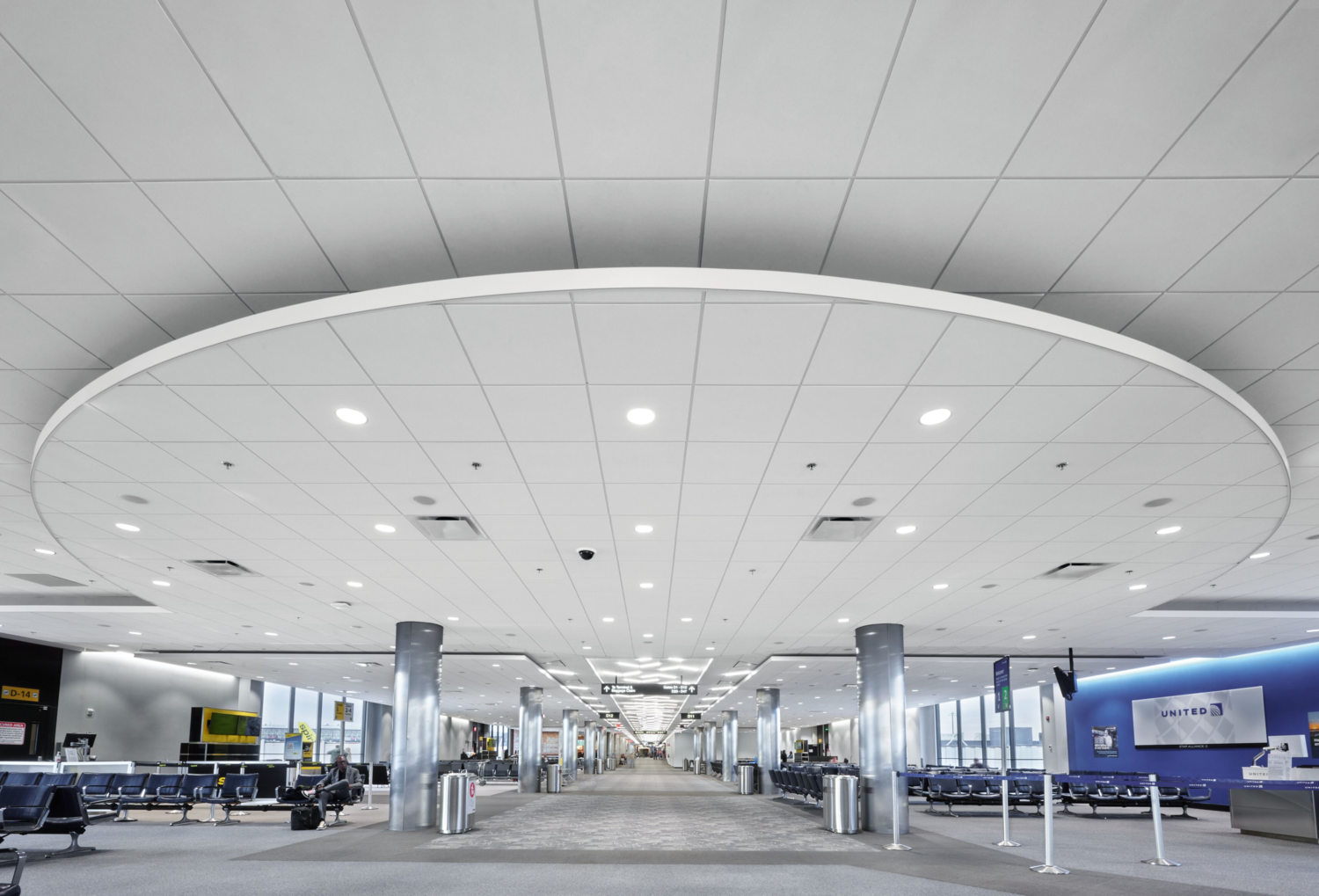

Restoring Nature: JMT’s Ecological Impact at Eccleston Property
JMT is developing this privately funded, turn-key, permittee-responsible mitigation project to preserve, enhance, and restore wetlands and streams for a total of approximately 10,604 stream credits and approximately 14.5 wetland credits of various Cowardin type.
Location: Baltimore County, Maryland
JMT identified the project site using a proprietary remote sensing and GIS tool as well as in-house property specialists to secure the property with an easement from the landowner. JMT developed the final mitigation plan, including design and permitting, procured a contractor and is currently overseeing construction of the project. Additional services include baseline data collection (natural resources inventories of wetlands, waterways, and forests), geomorphic surveys and assessment, topographic and boundary survey, landscape design, credit calculations, and long-term performance criteria monitoring.
The principal goals of the project site include restoring and stabilizing the brown trout fishery on the Upper Jones Falls. Approximately 30 years of data have identified that brown trout are decreasing in numbers as the water temperature warms due to watershed development and climate change. Additionally, emerald ash borer has destroyed much of the canopy on which the stream reach depends for thermal regulation. JMT identified trends in the fishery and set forth a baseline monitoring plan, which, when concluded, will have more than 13 years of baseline data for the project reach, including benthic macroinvertebrates, fisheries, thermal, and geomorphic data. The project site will have some of the highest top-tier biological goals of any site proposed in Maryland, far exceeding the more commonplace TMDL sediment reduction goals of most projects.
The project includes full monitoring and a maintenance and adaptive management plan with JMT-funded financial instruments to protect and maintain the project in perpetuity. Following the detailed 10-year monitoring period, a nonprofit, long-term steward will inherit the endowment for the site for long-term monitoring and maintenance, releasing the permittee from future obligation on the site. JMT developed an operations plan to ensure that existing and future land uses on the site are compatible with the mitigation site.
Innovative Energy Strategies: JMT’s Approach to Water Treatment Efficiency
JMT conducted an energy audit and baseline analysis to produce an energy management plan to implement energy optimization opportunities.
Location: Harrisburg, PA
Client: Capital Region Water
JMT’s team of facility experts, energy innovators, and procurement specialists identified where there was an energy deficit and developed strategies for energy optimization in Capital Region Water’s (CRW) Harrisburg water and wastewater treatment processes. CRW had anticipated its annual electricity demand to increase more than 40% due to wastewater treatment plant upgrades. Through our study and resulting long-term and sustainable energy management and optimization program recommendations, as well as immediate, no cost/low-cost actions, CRW realized immediate savings and energy reductions, in turn saving taxpayers money.
Our team conducted a two-day, on-site energy audit and base line analysis to produce an energy management plan to implement short- and long-term energy optimization opportunities. This was a critical first step for CRW to establish a comprehensive energy management program aimed at reducing energy and increasing alternative energy usage while simultaneously enhancing system resiliency.
JMT developed a strategy for procuring natural gas and electricity under an arrangement that benefited from CRW’s consumption profile. Our team made recommendations that included energy demand reductions, production of alternatives, and purchase of renewable energy to mitigate potential environmental and public health consequences while insulating the community and customers from energy rate volatility.
Our on-site assessment of CRW’s two major facilities (water and wastewater plants) involved collecting data, interviewing staff, performing operations review, coordinating with a sub-metering contractor, and identifying a list of preliminary energy conservation measures.
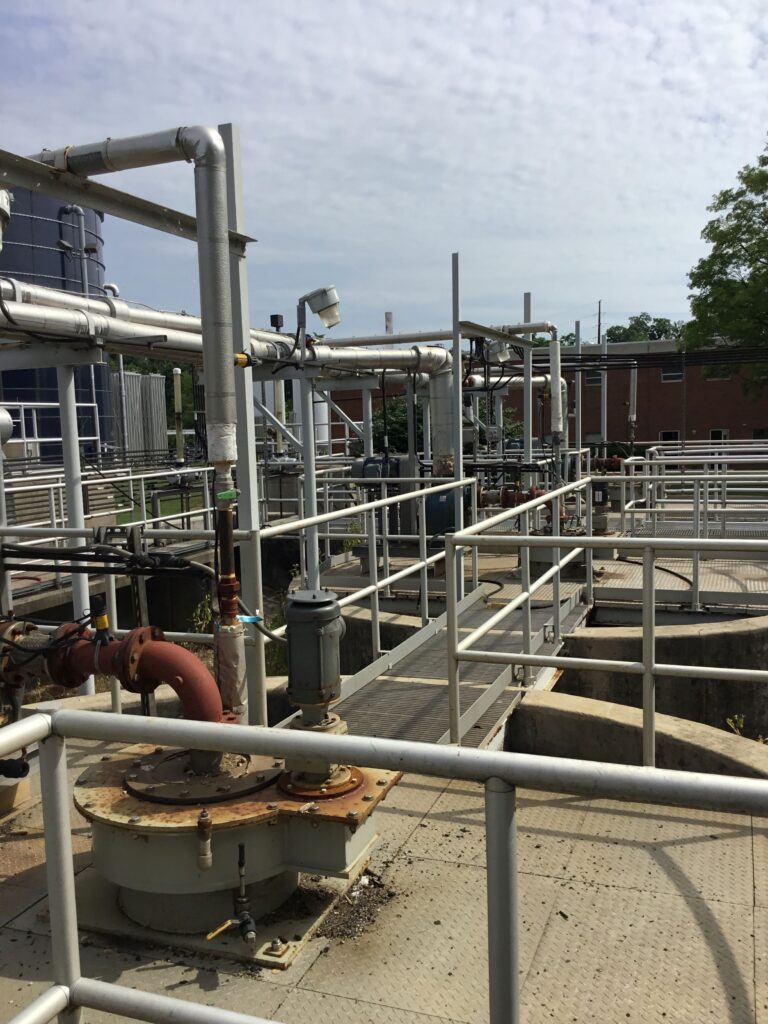
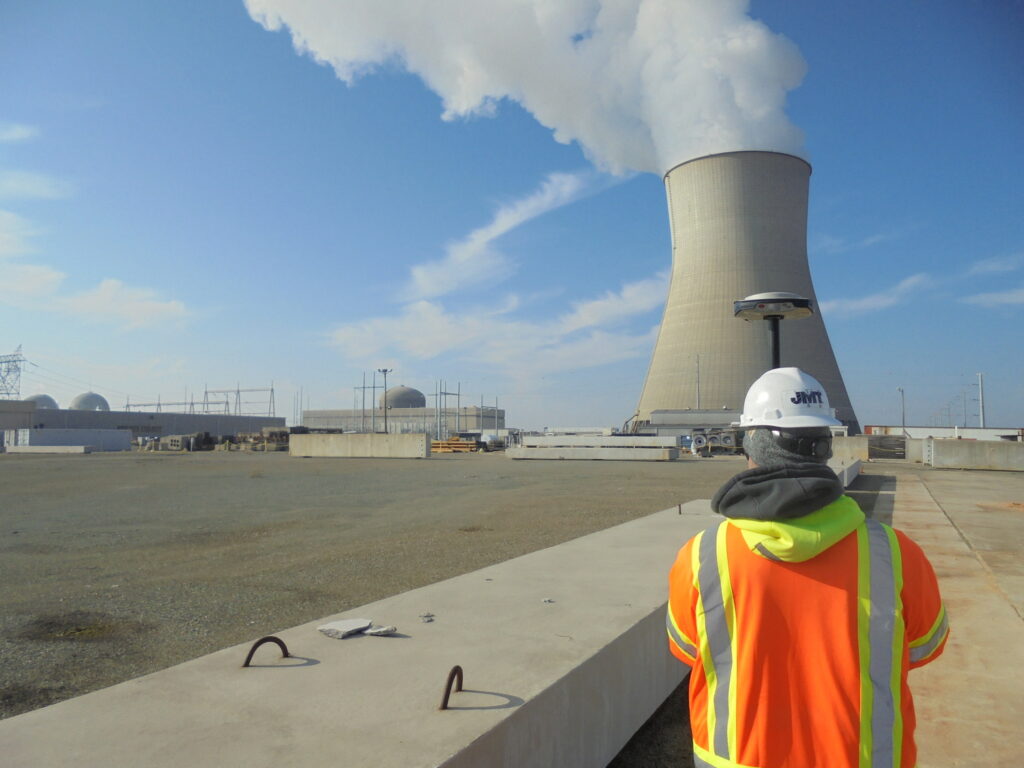
Harnessing the Winds of Innovation: JMT’s Cutting-Edge LiDAR and Drone Surveying at NJ Wind Port
JMT conducted photogrammetric and general surveying services.
Location: Paulsboro, NJ
Client: Moffatt & Nichol
For the NJ Wind Port, JMT’s provided services in which the entire site flown using LiDAR, although it was a commercial aircraft for aerial mapping. JMT used a ground-based HD scanner to capture wire heights and elevations for the transmission line clearances
JMT’s team provided LiDAR/Drone surveying to two areas of interest included:
- Area 1 – about 100 acres that includes cell 3 of the CDF
- Area 2 – about 135 acres, including Area 1 plus other 35 acres between the CDF3 and the nuclear plant
Factors considered included ground control points that required determination of location requirements. Of importance was the accuracy on the southern half of Area 1, considering the phragmites and several ponds around the site.
Energy Management services supporting electrical facilities
JMT’s electric utility clients count on us to provide them with engineering and support services for substations and facilities. We serve federal, state, and local government agencies, industrial buildings, public and private utilities. JMT provides solutions for new facilities and facility improvements.
JMT’s facility life cycle management includes setting up projects in scheduling software, managing the design and coordinating with internal stakeholders, supporting procurement of contractors, managing the schedule, budget, and quality performance. Our services include – land development, building and facility design services, mechanical, electrical & plumbing design, process engineering, program & project management, staff augmentation, scheduling, construction management, commissioning services, budgeting support, risk management, Quality Assurance, & Project Closeout.
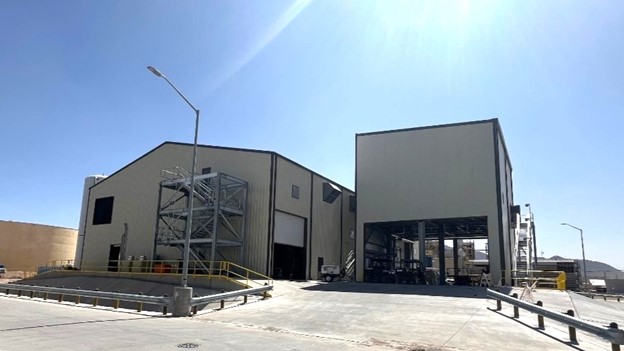

Energy Management Services supporting Electric Infrastructure
JMT program management supports services for the design, construction and commissioning of both greenfield and brownfield electrical substation, distribution and transmission projects. JMT has also led project management services for a wastewater treatment facility capable of treating 1.5 MGD via a packaged system of clarifiers, multimedia filters, weak acid units, and reverse osmosis processes. Our program continues to grow as a testament to our ability to deliver value for our clients.
JMT provides comprehensive project management services across all phases and disciplines of the client projects to include land and right-of-way acquisition, regulatory compliance, engineering design, material procurement, construction, and project closeout. Additionally, our professionals have extensive experience in integrating and coordinating efforts across the various functional departments inherent in a large electric utility, including engineering, procurement, budget and accounting, facilities, land management, legal, government affairs, environmental, and public relations. Our professionals are well-versed with the Federal Energy Regulatory Commission (FERC) and the Public Utility Commission (PUC) standards.
Energy-Smart Renovation: JMT’s HVAC Overhaul at BWI Concourse
JMT has undertaken a significant project to upgrade the mechanical, electrical, and architectural systems within the 90,000-square-foot DX and DY Concourse at BWI Thurgood Marshall Airport. This comprehensive renovation focuses on enhancing the HVAC systems to improve energy efficiency and operational performance.
Location: Anne Arundel County, MD
Client: Maryland Aviation Administration
The primary components of the HVAC upgrade include replacing rooftop air handling units, VAV boxes, and modifying chilled and heating water piping. Additionally, the project involves upgrading the building automation system and expanding the Concourse’s chiller plant. One of the key challenges was the capacity expansion of the chilled water plant, which required careful consideration of space limitations and minimizing construction impacts on building and airfield operations. To address these challenges, JMT leveraged advanced building information modeling (BIM) techniques. Lidar scanning of the existing plant was performed to develop a dimensionally accurate Revit model, allowing for the evaluation of multiple equipment configurations within the available space. This effort was crucial in designing an equipment layout that not only increased the existing plant capacity but also allowed for future expansion by installing an additional chiller.
The project included replacing the entire primary loop of the chilled water system and the condenser water system, including cooling towers. The Revit model captured both new and existing components to ensure seamless integration of the larger chillers and confirmed constructability within the relatively small mechanical room. This modeling also facilitated coordination with airfield operations managers and the contractor’s phasing to limit time and operational impacts during construction. An essential aspect of the chiller plant upgrade was the implementation of an optimization program within the building automation system. This program is designed to reduce energy consumption by determining the ideal combination of cooling towers, chillers, and pumps needed to meet the cooling demands of the concourse. The optimization algorithm evaluates the efficiencies of each piece of equipment at various operating points to minimize the energy required to maintain system setpoints.”
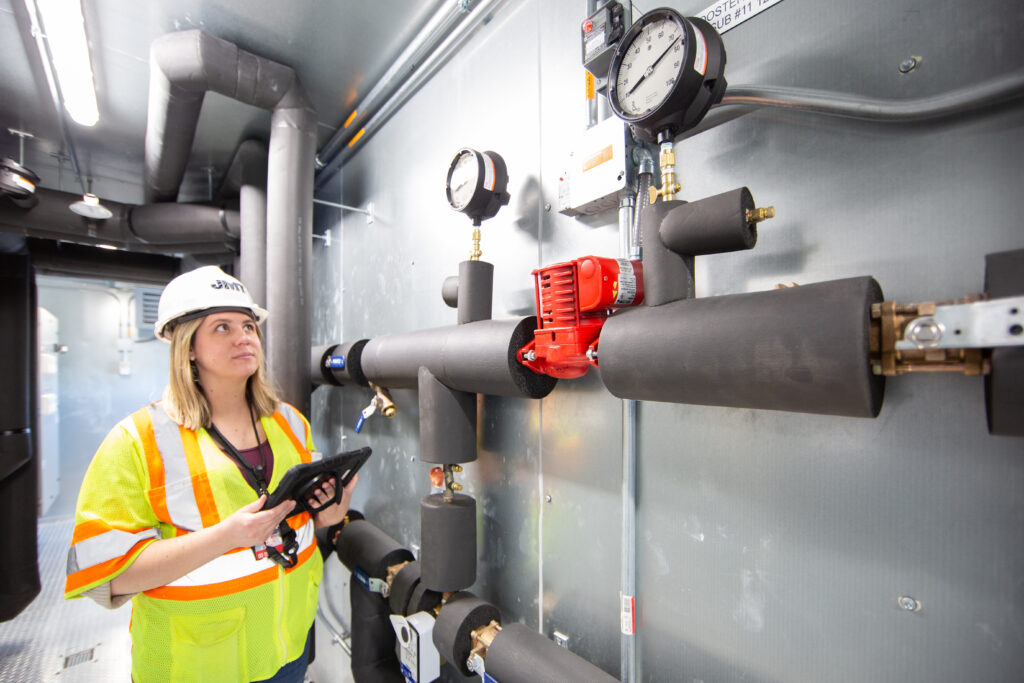
Energy Management